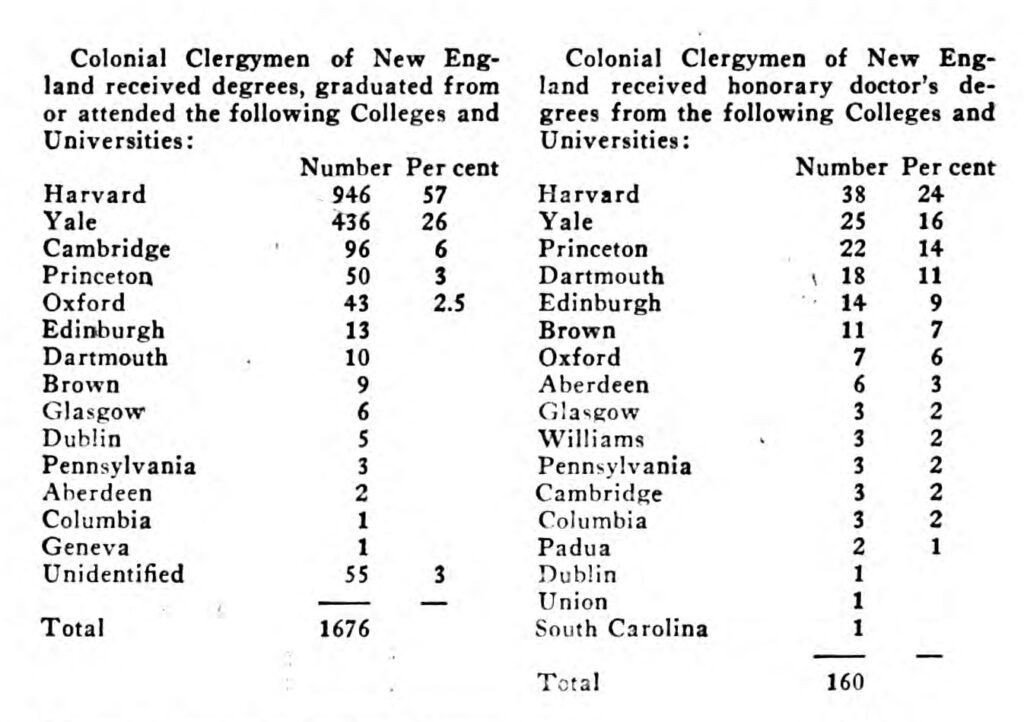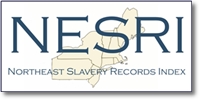Note: This project is ongoing. This article and the associated report will be updated as the project research continues.
Colonial campuses in the northeast have studied their histories of slavery, but generally their focus has been on founders, donors, staff and faculty, not students. However, when campus officials and faculty members model and normalize slavery, this sends an important educational message to students, who as alumni bring these values and norms to their future home communities. In this way, slavery on campus promotes slavery in distant communities. This is particularly true when the campuses are educating future ministers and religious leaders, who graduate and then model and espouse slavery to their future congregations and communities.
This project seeks to document this process, identifying graduates of northeast colonial universities where slavery was practiced, who went on to practice slavery after graduation.
The Northeast Slavery Records Index (NESRI), having indexed many records of enslavement across the northeast, has begun to match slavery records with officials and students of universities and colleges, and developing online reports of the records we index. We include local records of enslavement by college officials and regional records by graduates in their home communities.
Select from among the colleges where we have initiated indexing of records and NESRI will generate a report.
The remainder of this article describes our methods, limitations and general findings.
Methods and Sources
Our first cohort of campuses are listed here, along a link to NESRI’s locality report for the university’s county, along with examples of their public acknowledgements of enslavement:
We have assembled a database of almost 10,000 names of alumni of the above colleges and universities, along with a database of almost 1,500 members of the clergy in The Colonial Clergy and the Colonial Churches of New England and the companion volume for the Middle Colonies. We match these against our NESRI dataset on more than 80,000 named enslavers in the northeast and produce online reports of our findings. The rules for matching were:
- The name had to match.
- The date range had to be feasible. The enslavement had to take place after graduation and before the death of the matching enslaver.
- The location of the enslavement record and the student had to match for the date of the enslavement. This required documentation of the student’s life after graduation.
It is important to understand the limitations of this project.
- One limitation is that most slavery in the northeast is not consistently documented, particularly in the 1700s and early 1800s, excep for years when there was a comprehensive census. So the project understates the numbers of officials and students who were enslavers.
- There are many instances where there are multiple name matches but we cannot determine that the “Peter Smith” who graduated is the same person as any of the “Peter Smith” enslavers. Campus-based researchers may be able to provide or use enrollment records to connect more dots.
- Some northeastern colonial college students came from places outside of the northeast. NESRI’s systematic lists of enslavers does not extend to southern states.
These limitations mean that we understate the numbers of enslaving alumni. But even with the data we have, at Yale, for example, 6% of the 1756 class were eventual enslavers when the 1756 census revealed 2% of the Connecticut population to be enslaved. In 1733 and 1781, 25% of Yale’s graduating class members were eventual enslavers when the statewide enslavement percentage was lower. At Union College in 1800, 22% of the graduating students were eventual enslavers.
The reports make it clear that the impact of colonial university slavery was not limited to the university campuses and adjacent communities. Yale, for example, has alumni enslavers in practically all of the northeast colonies.
Clergy
We have also focused on clergy for several reasons, primarily because the earliest colleges were sometimes developed with divinity school missions, and alumni who are clergy can be highly influential community leaders. The clerical records also track alumni with sufficient dates and locations to verify matches.

Divinity Degrees Awarded in New England, by University (Source: Colonial Clergy of New England)
If members of the clergy learned in undergraduate college studies, or in divinity school, that enslavement is normal and not inconsistent with church teaching, they can preach and model these views in their church communities. Another practical reason is the availability of extensive biographical information about members of the clergy, including the colleges and universities they attended, and the churches they served.
ABOUT NESRI
NESRI is an online searchable compilation of records that identify individual enslaved persons and enslavers in the states of New York, Maine, New Hampshire, Vermont, Massachusetts, Rhode Island, Connecticut and New Jersey. NESRI indexes census records, slave trade transactions, cemetery records, birth certifications, manumissions, ship inventories, newspaper accounts, private narratives, legal documents and many other sources. The goal is to deepen the understanding of slavery in the northeast United States by bringing together information that until now has been largely disconnected and difficult to access. NESRI has indexed almost 70,000 records relating to slavery, most naming the enslaved people and/or their enslavers.
To see what NESRI does, the most direct and simple approach is to click on Find Community or Locality Records. Anyone can identify a place like the name of a Town or County or an entire state, and see a customized report of the enslavement records for the selected locality. For colleges and universities, we uses this page to present tables of officials, students and enslaved people.



